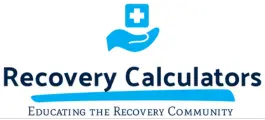Addiction is a complex issue that affects millions of individuals and their families. Whether it’s alcohol, opiates, or other substances, identifying and treating addiction early is crucial for a successful recovery. To aid in this process, various medical calculators have been developed to assess the severity and impact of substance use. These tools are essential for both healthcare providers and those in recovery, as they provide a structured way to evaluate addiction and plan effective treatment.
One of the foremost resources in this field is the range of addiction calculators we offer. These include tools like the Clinical Institute Withdrawal Assessment for Alcohol (CIWA), the Clinical Opiate Withdrawal Scale (COWS), and the Short Michigan Alcohol Screening Test (SMAST). Each of these tools serves a specific purpose in the recovery journey, helping to identify withdrawal symptoms, evaluate the need for medical intervention, and screen for alcohol misuse.
In this article, we will break down the most widely used addiction calculators available on our platform. By understanding how these tools work, you can better grasp their role in guiding treatment plans and improving recovery outcomes. Whether you are seeking help for yourself or a loved one, knowing how to use these calculators can make a significant difference in the recovery process.
Overview of Our Addiction Calculators
Our addiction calculators are designed to help individuals and healthcare providers assess various aspects of substance use and withdrawal. By offering precise measurements, these tools guide the treatment and recovery process. Let’s take a closer look at three key calculators: CIWA, COWS, and SMAST.
1. CIWA (Clinical Institute Withdrawal Assessment for Alcohol): This tool is used to assess the severity of alcohol withdrawal symptoms, helping medical professionals determine the best treatment approach. It evaluates factors like nausea, tremors, and anxiety, providing a comprehensive score that indicates the level of medical intervention required.
2. COWS (Clinical Opiate Withdrawal Scale): COWS measures the severity of opiate withdrawal symptoms. It gauges physical and psychological symptoms including sweating, restlessness, and pupil size. The score helps clinicians decide on appropriate medication and detox strategies.
3. SMAST (Short Michigan Alcohol Screening Test): This tool screens for potential alcohol problems by asking a series of yes-or-no questions related to drinking behavior and its consequences. A high score indicates a need for further evaluation and possible intervention.
These calculators serve as essential aids in drug and alcohol rehabs, especially in luxury rehabs where tailored and accurate assessments are vital for high-quality care. They allow for early intervention and precise treatment planning, making the recovery journey more effective and personalized.
How the CIWA Tool Assesses Alcohol Withdrawal
The CIWA tool is essential in assessing alcohol withdrawal symptoms, guiding detox and treatment plans. The tool consists of ten questions that evaluate the severity of symptoms like nausea, vomiting, tremors, sweating, anxiety, tactile disturbances, auditory disturbances, and visual disturbances. Each symptom is rated on a scale, and the total score determines the severity of withdrawal.
Here’s a breakdown of how the CIWA tool works:
– Mild Withdrawal (Score 0-9): This level usually indicates mild symptoms that may not require medication but still need monitoring. Simple measures like hydration and rest may be enough.
– Moderate Withdrawal (Score 10-20): At this stage, symptoms are more pronounced and might require some medication. Monitoring is continuous, and a healthcare provider will decide the best course of action.
– Severe Withdrawal (Score 21 and above): Severe symptoms require immediate medical attention, possibly in a hospital setting. This stage can include severe delirium tremens, hallucinations, and seizures, needing intensive care.
Administering the CIWA tool involves a healthcare professional asking the patient to rate their symptoms. The process is repeated regularly to monitor changes and adjust the treatment accordingly. This regular monitoring is crucial in places like Scottsdale rehabs and Phoenix rehabs, where quality care involves constant assessment and timely interventions.
In summary, the CIWA tool is a reliable way to measure alcohol withdrawal symptoms, helping to customize detox and recovery plans. Using it ensures that individuals receive the right level of care at the right time, making their recovery journey safer and more effective.
Understanding the COWS Scale for Opiate Withdrawal
The Clinical Opiate Withdrawal Scale (COWS) is an important tool for assessing the severity of opiate withdrawal symptoms. This tool helps healthcare providers understand how intense a person’s withdrawal symptoms are and decide the best treatment plan. COWS evaluates a variety of symptoms, from physical signs to psychological distress.
Here’s how the COWS scale works:
– Heart Rate and Sweating: An increased heart rate and sweating are common in opiate withdrawal. The scale measures these symptoms to gauge the severity level.
– Restlessness and Tremors: Patients often feel restless and may experience tremors. These symptoms are rated to help determine the overall withdrawal intensity.
– Gastrointestinal Issues: Nausea, vomiting, and diarrhea are also part of the withdrawal process. By assessing these symptoms, healthcare providers can offer treatments to alleviate discomfort.
– Psychological Symptoms: Anxiety, irritability, and depression are common during withdrawal. COWS scores these symptoms to ensure that both physical and mental health needs are addressed.
Using the COWS scale involves asking the patient about their symptoms and observing physical signs. Each symptom is rated, and the total score helps determine whether the withdrawal is mild, moderate, or severe. This precise measurement is useful in drug rehabs, including luxury rehabs, where tailored treatments are key to effective recovery.
Understanding the COWS scale ensures that opiate withdrawal is managed safely and effectively. This tool is vital for creating a supportive environment during the detox and recovery process, helping individuals move towards long-term sobriety.
The Role of SMAST in Alcohol Screening and Recovery
The Short Michigan Alcohol Screening Test (SMAST) is a quick and reliable way to screen for alcohol use problems. This tool consists of 13 yes-or-no questions that cover various aspects of drinking behavior and its impact on the person’s life. The SMAST is often used in alcohol rehabs to identify individuals who need more in-depth assessment and treatment.
Key areas assessed by SMAST include:
– Drinking Patterns: Questions about how frequently and how much the person drinks help determine if their drinking habits are problematic.
– Behavioral Impact: The tool asks about changes in behavior due to drinking, such as neglecting responsibilities or legal issues.
– Physical and Mental Health: Questions also address the physical and mental effects of drinking, like blackouts or feelings of guilt.
Administering the SMAST is straightforward. The person answers yes or no to each question, and each yes counts as one point. A higher score indicates a greater likelihood of alcohol use disorder. This tool is particularly useful in places like Scottsdale rehabs and Phoenix rehabs, where early detection can lead to more effective treatment strategies.
The SMAST helps in identifying those who may benefit from interventions ranging from brief counseling to more intensive treatment in alcohol rehabs. It is a vital component in the journey to recovery, ensuring that individuals receive the right level of care based on their unique needs.
Conclusion
Addiction calculators like CIWA, COWS, and SMAST play a significant role in the recovery process. They offer a scientific method to evaluate the severity of addiction and withdrawal, guiding healthcare providers in crafting effective treatment plans. These tools are essential in settings like drug and alcohol rehabs, providing a structured approach to care and improving patient outcomes.
By understanding and utilizing these calculators, individuals and their families can better navigate the challenging path of recovery. Whether dealing with alcohol withdrawal, opiate withdrawal, or screening for alcohol use disorders, these tools ensure that the right level of care is provided. From luxury rehabs to local treatment centers, the importance of accurate assessment cannot be overstated.
Do you need more information on how these sobriety calculators can assist in your recovery journey? Visit Recovery Calculators to explore our comprehensive resources and take the first step towards a healthier, sober life. Start your path to recovery today with the right tools and support.


